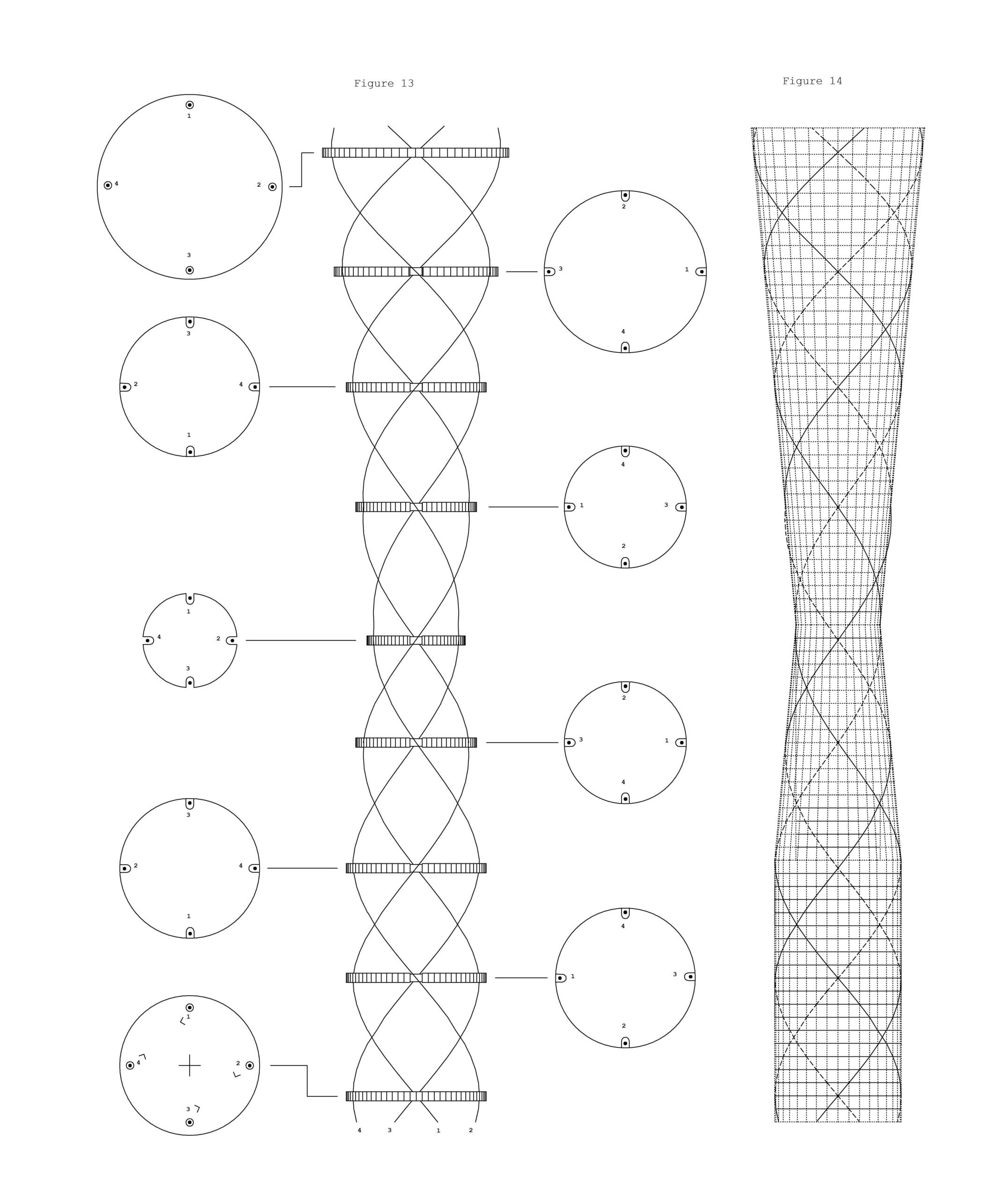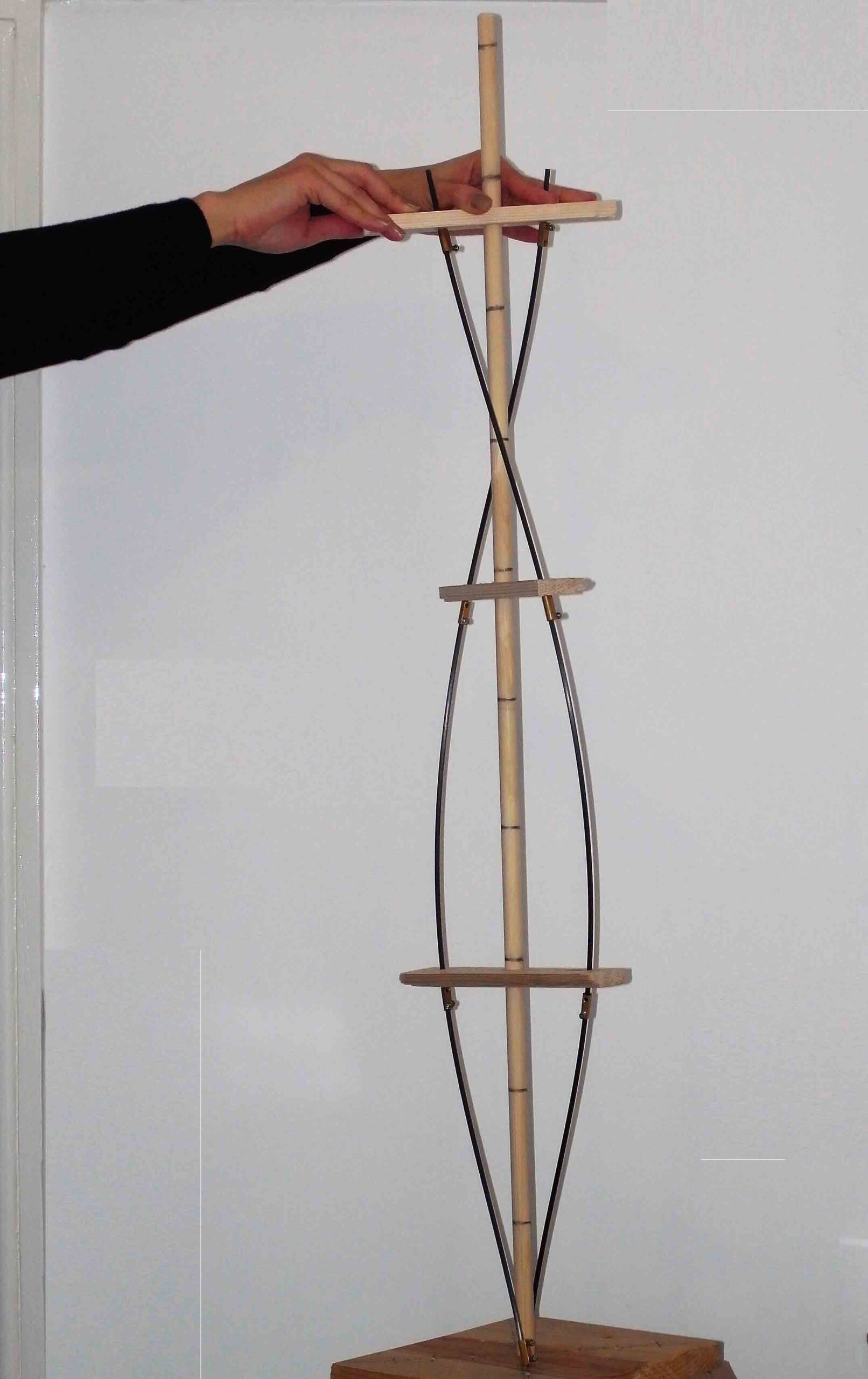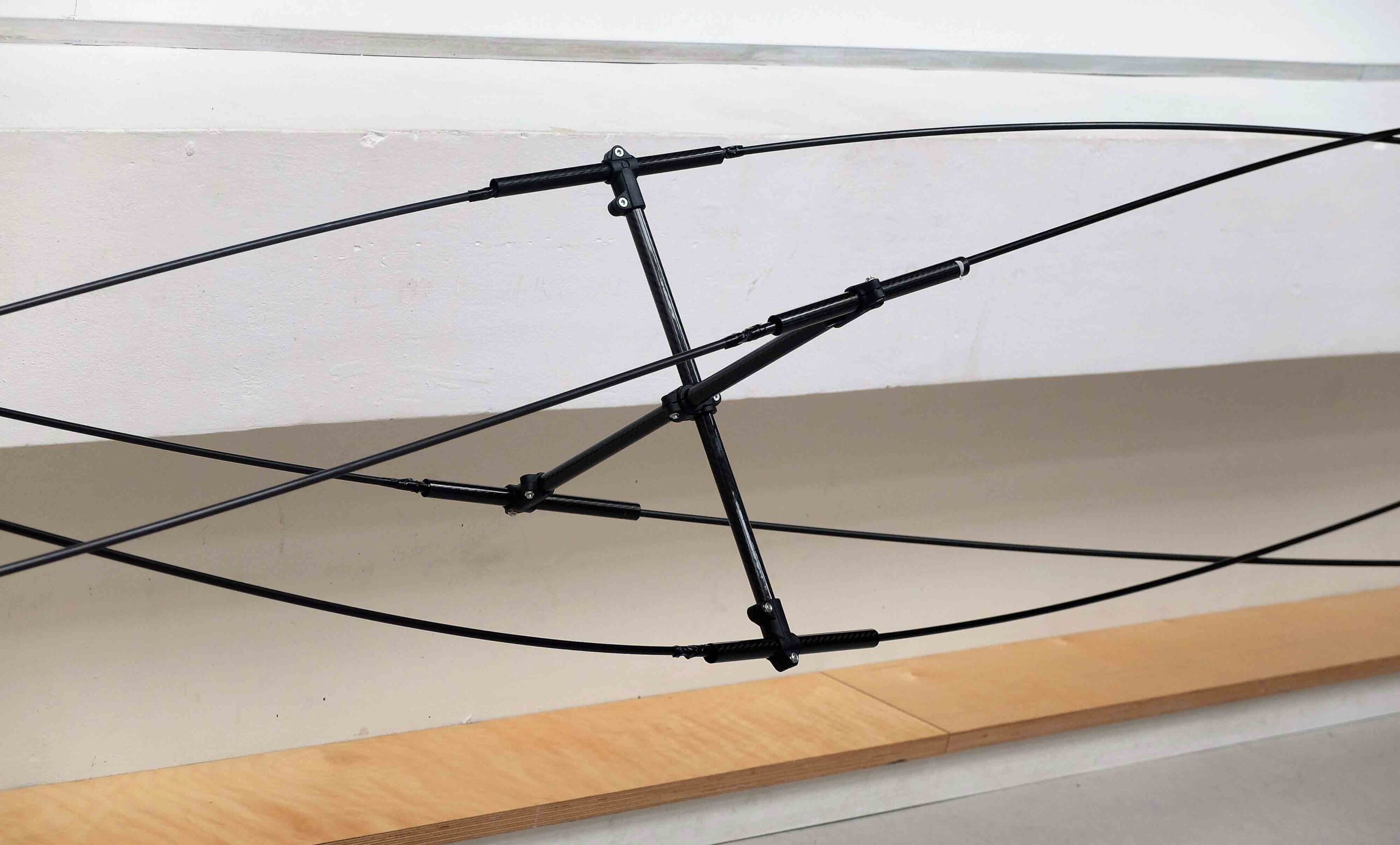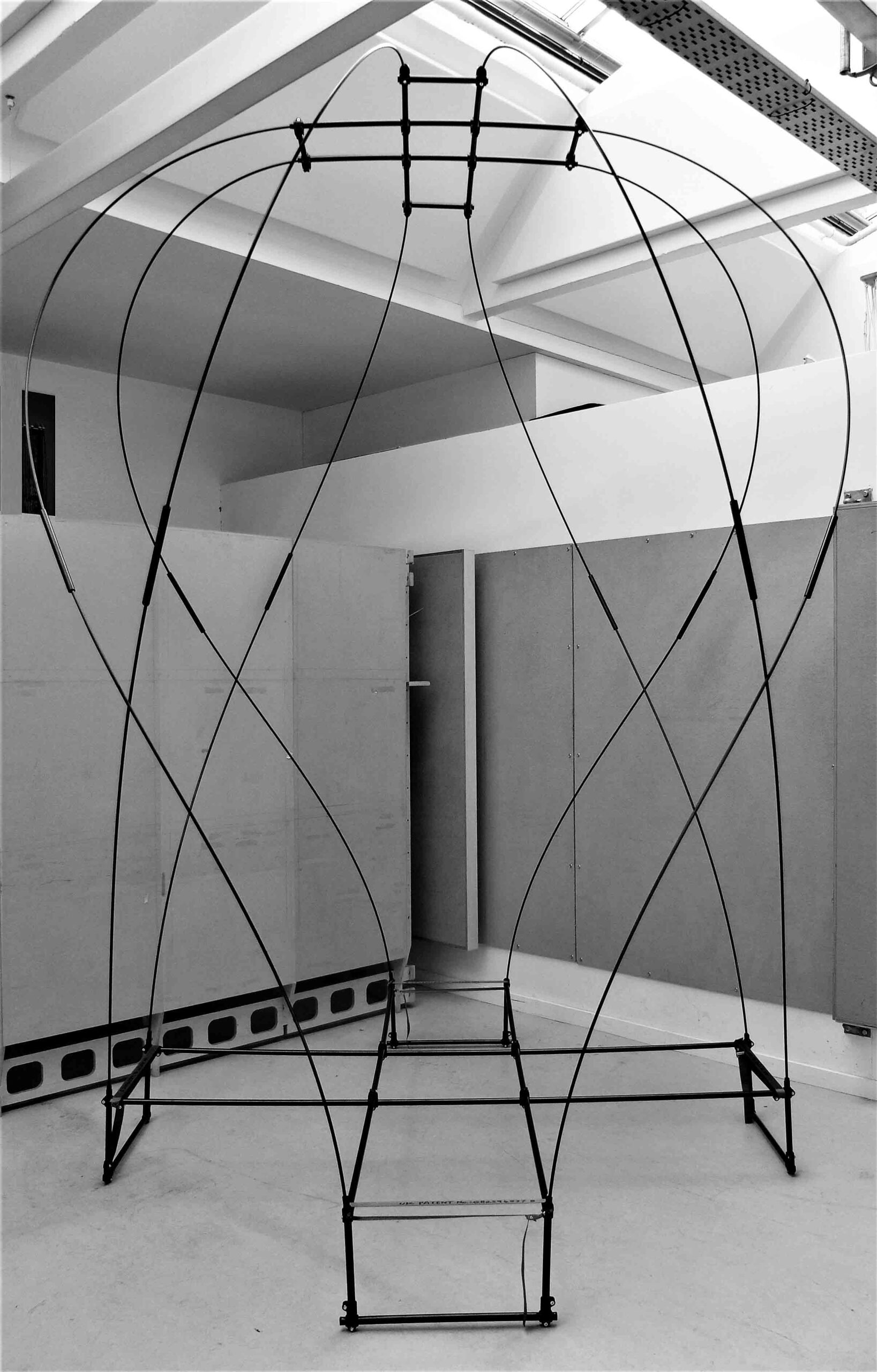Experiments in ‘Torsegrity’: Helical frameworks with torsional integrity
Pete Silver
Fabrication and Assembly: Will McLean, FABRICATION LAB staff (David Scott, François Gerardin, Christian Newton, Guy Sinclair and Kristina Veleva). Thanks also to Harry Charrington for his support.
Carbon fibre products: Easy Composites Ltd.; Connecting components: RK Rose+Kreiger.
For a full description of UK patent number GB2594037B see: ipo.gov.uk/p-find-publication.htm

Drawings

Test model

Proof-of-concept models – 8mm dia. carbon fibre rods held in torsion by a rigid scaffolding of 18mm dia. carbon fibre tubes with reinforced polyamide connecting components

Proof-of-concept models – 8mm dia. carbon fibre rods held in torsion by a rigid scaffolding of 18mm dia. carbon fibre tubes with reinforced polyamide connecting components
THERE IS A CONTINUING need to develop lightweight but strong structures that are quick and easy to assemble, thereby minimising their embodied energy and use of natural resources. For example, diagrid structures, like Lamella domes, use less material than conventional frames when deployed for buildings and roofs. Similarly, structures like cable-stayed, suspension or ‘tensegrity’ structures demonstrate a high strength-to-weight ratio by assembling discrete structural elements so that compressive struts are held in place spatially by tensile wire or rope.
In 2022, Pete Silver was granted a UK patent for his novel structural system: Helical Structural Framework with Torsional Integrity. Both natural and synthetic materials of various dimensions and cross-sections that can undergo elastic deformation may be employed. Examples include bamboo, young (green) timber shoots, and carbon-fibre and epoxy composites. It seeks to provide a three- dimensional structure based primarily on the principle of stiffening linear elements with a low elastic modulus to form arcs. These elements may be applied as structural components within a building such as columns, beams, or trusses, or form entire structures such as bridges.
The School of Architecture + Cities sponsored Silver to build a set of large-scale prototype structures to complement his own proof-of-concept models. Carbon fibre rods are used to form splines which are held in torsion by rigid elements made from 18mm-diameter carbon fibre tubes with reinforced polyamide connecting components. The forces exer ted by opposing splines cancel each other out to generate structural integrity.

